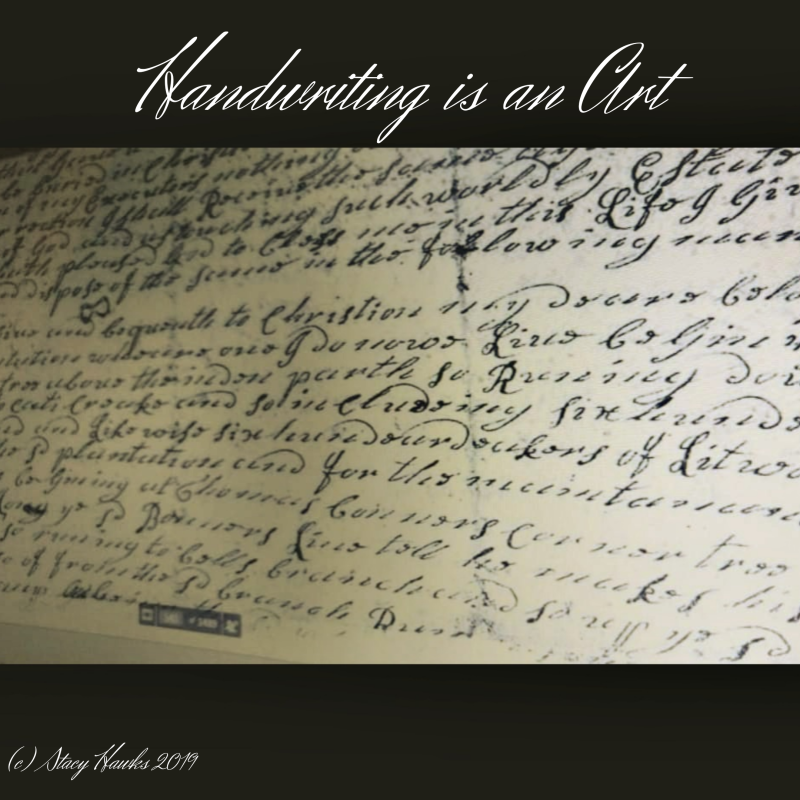
When I was in the 3rd grade, we learned how to form letters in cursive. Sometime later while attending college in 2006, I had someone remark how beautiful my handwriting was.
I later learned that many students had never seen cursive, let alone had they ever practiced it. Even more surprising was the fact that these students were just two or three years younger than me.
Majoring in history, and even earlier than that, I had researched areas of local and regional history that introduced me to various forms of handwriting. As most researchers can attest handwriting is an art, but it also has a history all its own beginning in the fifth century ACE (after the common era) after Rome's fall. Penmanship became increasingly popular and so too did the need for parchment upon which to write stories, books, or to relay historical events. Besides its historical impact handwriting also gave some indication of one's education, gender, and culture.
Ever heard the saying that the pen is mightier than the sword? The pen has been known to bring down civilizations, change the course of human thinking, even Empires. A good example is Martin Luther during the Reformation and his nailing of ninety-five theses to the church doors in 1517. It is also important to note that for a time, only individuals practicing handwriting were members of the churches.
Today, every decade, the US conducts the task of sending census takers to inquire about nationality, employment, the number of individuals residing in a household, their age, etc... The census started in the early 1800s with information collected by US Marshalls. It was not until the 1880s were citizens trained to conduct the tasks of data collection themselves.
In the 21st Century, most of these records are typed and stored in databases on a computer. However, if you ask genealogists or historians about older census records most will tell you that those, while searchable via databases such as Ancestry, Genealogy Bank, and others, are not typed. Instead, they are scanned in. This means while census documents are a great, free, and accessible resource, they are also handwritten.
True, some databases allow viewers to hover their mouse over certain words, showing what that word(s) are, but imagine not having that capability. Would it be possible for individuals who have not studied various forms of handwriting to discern handwritten documents from the mid-1500s, or at the latest, the 1800s without that translation assistance?
Great examples are letters, phrases, and words that we no longer see in everyday documents such as letters, thanks to the advent of computers, typewriters, and other devices. Some letters or words in these documents are not what they appear. For example, letters I and J or U and V appear identical at times.
The main thing to remember is our handwriting is as unique as our fingerprints, DNA, or family trees. Abolishing the practice of writing cursive is like erasing the past. For those of us who hope to preserve and remember it as men did in the fifth century, we should strive to bring it back.
For more tips and additional information, visit the GenealogyBank article & link below.
Create Your Own Website With Webador